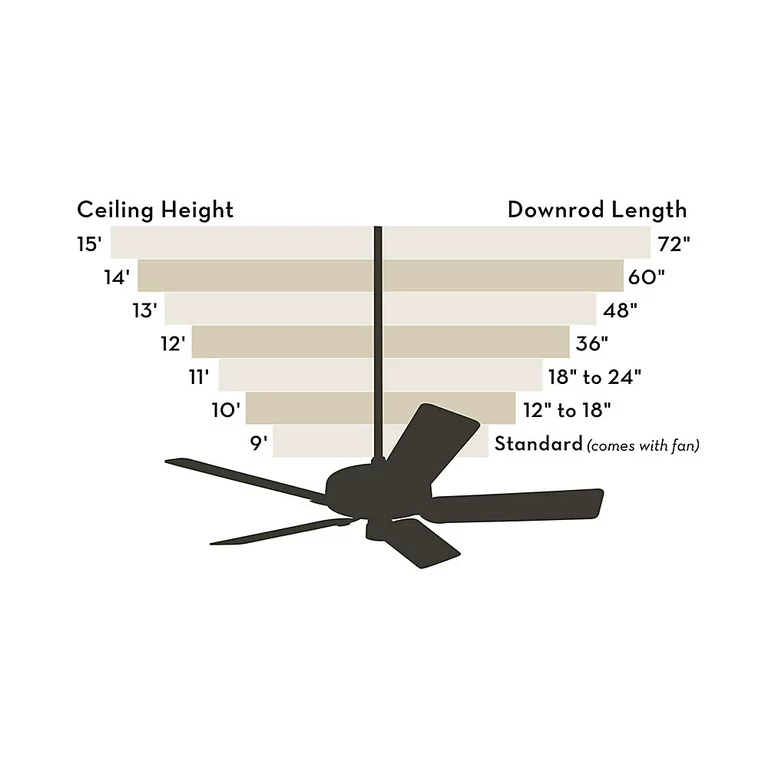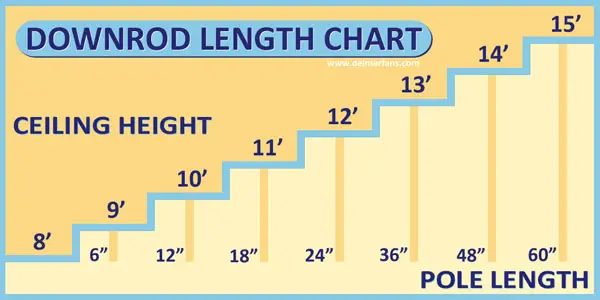Ceiling fans are essential fixtures in many homes, providing comfort and energy efficiency year-round. However, to ensure optimal performance, it’s crucial to choose the right downrod length. In this guide, we’ll explore everything you need to know about selecting the correct size downrod for your ceiling fan.

Understanding Downrods
Before diving into the specifics of downrod lengths, let’s first understand what a downrod is and its significance in ceiling fan installation. A downrod is a metal pipe that connects the fan motor to the mounting hardware, extending the fan away from the ceiling. This extension allows for proper airflow and clearance, ensuring the fan operates effectively.
Read too: Striped Schoolhouse Ceiling Light Fixtures: Unveiling the Timeless Charm
Factors to Consider
Several factors influence the appropriate downrod length for your ceiling fan, including the room’s size, ceiling height, and slope. Here’s a closer look at each:
Room Size
The size of the room where the ceiling fan will be installed plays a significant role in determining the ideal downrod length. Larger rooms require longer downrods to distribute airflow evenly throughout the space.
Ceiling Height
Ceiling height is another crucial consideration. For standard ceiling heights (typically 8 to 9 feet), fans are usually installed flush or with a short downrod. However, in rooms with higher ceilings, longer downrods are necessary to bring the fan closer to optimal airflow levels.
Sloped Ceilings
If your ceiling has a slope, you’ll need to account for this when selecting a downrod. Special mounting hardware or angled ceiling adapters may be required to ensure the fan hangs level and operates correctly.
Measuring for the Right Size
To determine the correct downrod length for your ceiling fan, follow these steps:
- Measure Ceiling Height: Use a tape measure to determine the distance from the ceiling to the floor.
- Consider Blade Clearance: Allow for at least 7 feet of clearance between the floor and the lowest point of the fan blades.
- Calculate Downrod Length: Subtract the desired blade clearance from the ceiling height to find the optimal downrod length.
What Size Downrod For Ceiling Fan
Now, let’s address the central question: What size downrod do you need for your ceiling fan? The answer depends on the factors mentioned above. For rooms with standard ceiling heights, a flush-mount installation or a downrod of 3 to 5 inches is usually sufficient. However, for rooms with higher ceilings, longer downrods ranging from 12 to 72 inches may be necessary.
Conclusion
Choosing the right downrod length is essential for maximizing the performance and efficiency of your ceiling fan. By considering factors such as room size, ceiling height, and slope, you can ensure proper airflow and optimal comfort in your home.
In conclusion, when selecting a ceiling fan and downrod, remember to measure carefully and consider the specific requirements of your space. With the right size downrod, you can enjoy enhanced airflow and energy savings for years to come.
